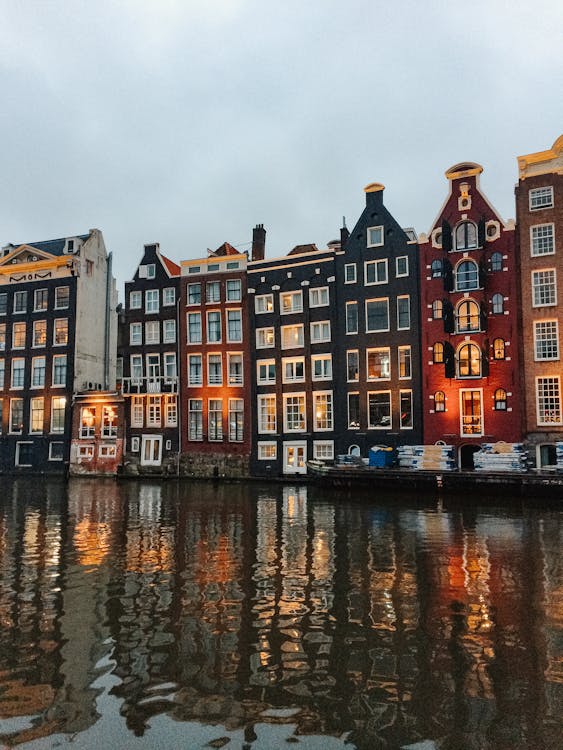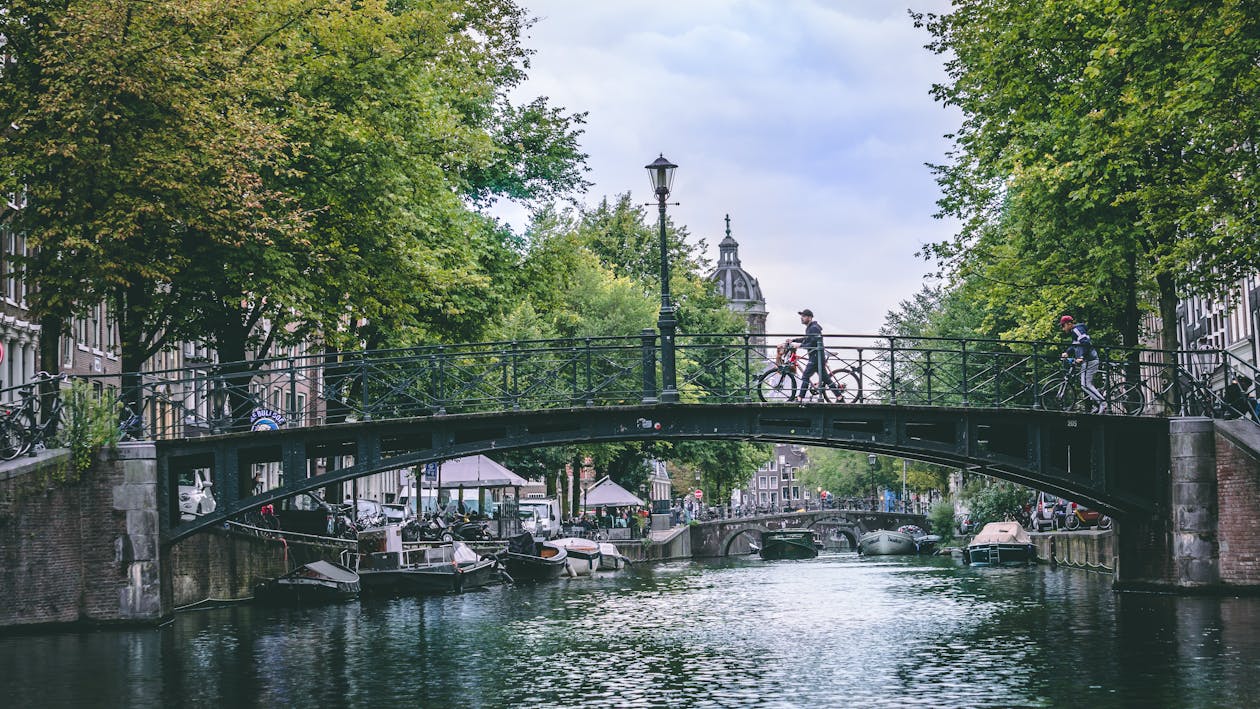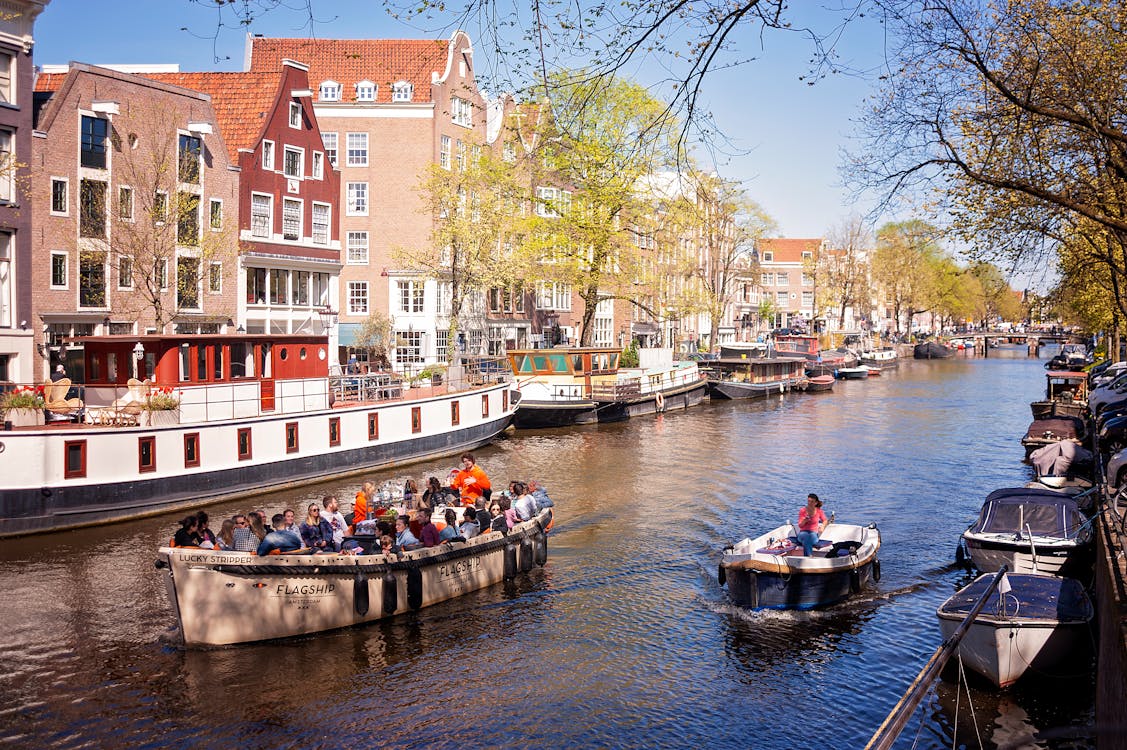The Amsterdam canals are located in the heart of the city, forming concentric semi-circles around the historic center.
The canals of Amsterdam hold immense historical, cultural, and economic importance for the city. They have been recognized as a UNESCO World Heritage site since 2010
Here are 19 interesting facts about the Canals and relevance to Amsterdam heritage.
1. Location

The Amsterdam canals are located in the heart of the city, forming concentric semi-circles around the historic center. In the top image you can see a beautiful areal view of the canals up to north.
2. Importance
The canals of Amsterdam hold immense historical, cultural, and economic importance for the city. They have been recognized as a UNESCO World Heritage site since 2010.
3. Historical Context
In the 17th century, known as the “Golden Age” of the Netherlands, Amsterdam experienced a period of economic prosperity and became a bustling trade hub. The canals were built during this time to facilitate transportation and improve Amsterdam’s position as a trade center.
4. Inspiration
The construction of the Amsterdam canals was inspired by the example of other successful canal cities like Venice and Bruges.
5. Design
The canals were meticulously designed by urban planners and engineers to provide efficient transportation and enhance the city’s aesthetic appeal.
6. Construction Process
The construction of the canals involved extensive manual labor. Workers dug trenches in the marshy ground and subsequently lined the canals with wooden pilings. Afterward, the walls were built using a combination of brick and timber.
7. Canal Rings
Amsterdam’s canals are divided into four main concentric rings known as Singel, Herengracht, Keizersgracht, and Prinsengracht. These rings delineate different epochs of construction.
8. Expansion
Over the years, the canals were expanded to accommodate the growing population and increasing trade. Additional canals, known as grachten, were added to connect the city’s various neighborhoods.
9. Economic Impact
The canals played a critical role in boosting Amsterdam’s economy by facilitating trade and transportation. They helped establish the city as a major European trading center.
10. Transportation
In the past, canals served as important transportation routes for the city’s inhabitants. Goods were transported through the canals, and people commuted using boats and barges.
11. City Planning
The construction of the canals required meticulous urban planning. Streets and houses were built along the canals, creating a unique layout that defines Amsterdam’s urban character to this day.
12. Architecture
The houses lining the canals boast stunning architecture, predominantly from the 17th century. The iconic canal houses feature narrow facades, tall windows, and decorative gables.
13. Canal Houses

Historically, canal houses were constructed narrow and tall due to tax regulations that were based on the width of the facade. These houses were a symbol of wealth for their owners.
14. Canal Bridges

Amsterdam is famous for its picturesque canal bridges, which are not only functional but also add to the city’s charm. The numerous bridges offer stunning views and many picturesque photo opportunities.
15. Preservation
Over the years, efforts have been made to preserve and maintain the canals’ historical and architectural value. Today, they continue to be an essential part of Amsterdam’s identity.
16. Tourism

The canals of Amsterdam attract millions of tourists each year. Canal cruises and boat tours offer visitors an opportunity to explore the city from a unique perspective.
17. Cultural Significance
The canals have played a crucial role in shaping Amsterdam’s cultural heritage. They have inspired countless artists, writers, and poets who sought inspiration from their beauty and tranquility.
18. Festivals and Events

The canals provide a scenic backdrop for various festivals and events held in Amsterdam throughout the year. Iconic celebrations like King’s Day and Amsterdam Pride parade make use of the waterways.
19. Sustainability
Amsterdam is committed to preserving its canals and embracing sustainable practices. Efforts are being made to maintain clean water and reduce pollution, ensuring the canals’ longevity.
Conclusion
The canals of Amsterdam stand as a testament to the city’s rich history and remarkable urban planning. Their construction has shaped the city’s layout, economy, and cultural identity. Today, the canals continue to captivate visitors from around the world with their beauty and charm, making Amsterdam a truly unique destination. If you are in Amsterdam, we definitely recommend starting in “This is Holland“, it will give you a brief History how Amsterdam and the canals were built.
Watch this video for a preview.













